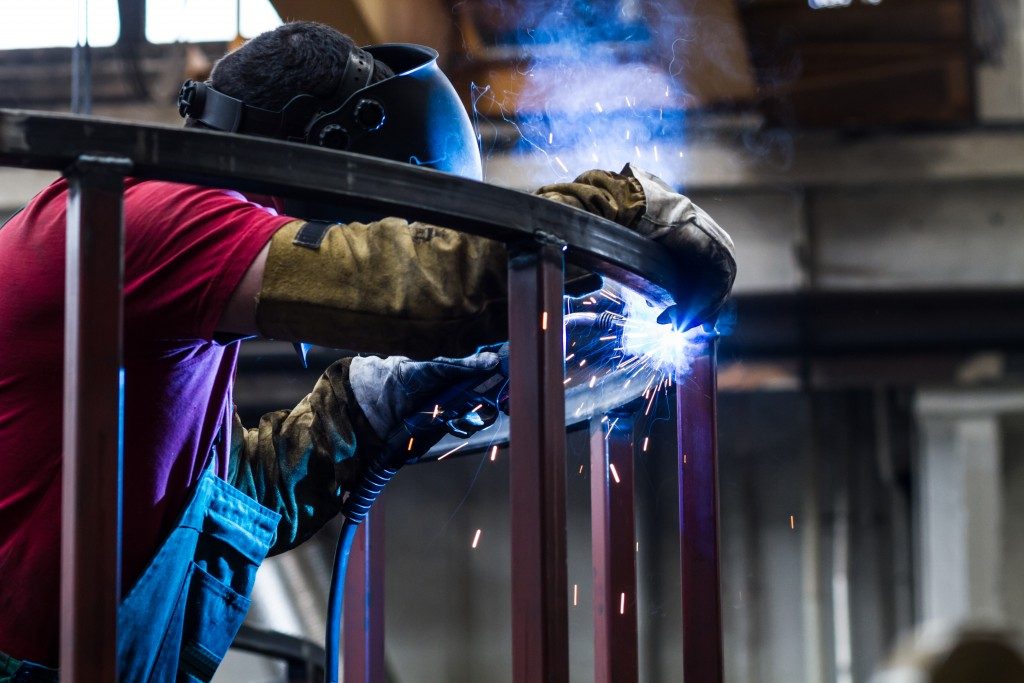3D printing is not new. The ancestor of 3D printers existed as early as the 80s, with a Japanese inventor patenting a prototype additive manufacturing machine. Still, 3D printers are, by nature, highly fragile, often expensive, and might not always work in every environment.
This is why NASA’s electron beam freeform fabricator, shortened to EBF3, is one of the most advanced in its field and might be the prime 3D printer as we take to the stars.
How EBF3 Works
You won’t see them anytime soon in your metal fabrication plant in Utah, though. The electron beam freeform fabricator is meant to be used in space, sort of like a Star Trek replicator. This is because EBF3 avoids the problem posed by the combination of a vacuum and microgravity, which restricts the capabilities of traditional 3D printers. For example, some 3D printers often use powder or resin, which needs to lay flat on a manufacturing bed. In an environment with little to no gravity, this powder or resin would be a cloud or a blob, and you wouldn’t be able to print anything with it.
Instead, the EBF3 uses a filament deposition method. In this technique, the material is superheated and sent to an extruder head, essentially a nozzle that deposits the material to a rotating table. In effect, FDM is a high-tech version of a glue gun. The extruder head builds one cross-sectional layer of a material at a time. When the coat “dries” and hardens, the head moves to the next layer and so on, until it can build the entire object.
While this is vastly oversimplified, the basic idea still works in EBF3. Unlike common filament deposition techniques, however, the eponymous electron beam is focused on a continually feeding metal source, applied as a wire on a metallic substrate. The laser instantly solidifies this substrate as it passes, and the process repeats, layer by layer, until the object is complete.
What EBF3 Brings to the Table
Apart from its capability to be used in any environment, EBF3 is also touted as a high-fidelity 3D printing device. Thanks to its FDM capability, it can fabricate near-net-shape results. This means that the object to be printed requires no post-processing or machining, which used to be a requirement in any 3D-printed object. The moment you make an object using EBF3, it’s ready for use (though it can be polished or finished if needed).
By the beginning of the 2010s, the EBF3 has been used to create aviation parts. The printing technique boasts that it has a 2-to-1 buy-to-fly ratio, which is a measure of how much the material for a part weighs (ergo, costs) to how much the finished product weighs. This is in contrast to conventional metal fabrication techniques in aerospace industries, which often have 15-to-1 or as much as 20-to-1 buy-to-fly ratios. No wonder that some parts of the F-35 Lightning II Joint Strike Fighter have been made using EBF3.
No Time to Rest on Laurels

Still, work on EBF3—and 3D printing in space, in general—is still forthcoming. Apart from the Holy Grail of near-1 buy-to-fly ratios (if not 1), some components need to be optimized for microgravity and overall efficiency.
And this is essential for man’s foray into space, as materials need not be launched all the time from the ground. Astronauts can pick up materials in space or on Mars, for example, and create their own, from simple handrails to critical mission support components. As Quincy Bean, NASA’s principal investigator for 3D printing in zero gravity, says, 3D printing can “increase [astronauts’] range and self-sufficiency” and that if you want to build anything in space, “you’re going to have to manufacture things in space.”

